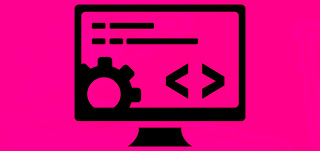Introduction
The meaning of the term agile is capable of moving instantly and effortlessly. The agile actual definition, being capable to understand, adapt and change instantly in evolutionary process. In simple terms means that there can be more than one way to do things.
What is Agile process ?
Agile process development methodology is a technique for developing software. Though agile methodology is quite different from other methodologies.
Agile means mobility, responding swiftly with change. In a simple way agile means the ability to shift quickly and efficiently.
In traditional software development methods, for example the waterfall model , a project can take several months and even years to complete and the user or customer may not get to see the end product until the completion of the project.
A non-agile project can take several months or a long period of time to complete the project because the developer and team have to gather the requirements of the customer and design the project like deciding the structure of the project, testing and user acceptance testing before finally deploying the project.
So, non-agile processes take a long period of time to get complete, but the agile process has iterations which are pretty short in duration during which Pre-determined features are developed and delivered.
The Agile process has one or more iterations and at the final iteration it delivers the complete product. In agile methodology the delivery of software is continuous and the main focus is good design of the product.
In an agile method daily interactions between the developer and user are required, if the user is changing the requirements is accepted by the agile process even in the later stages of the development. In this method the requirements are not clear hence it is difficult to predict the expected result.
Stages of Agile Development Process
The agile software development life cycle is the Well-organized sequence of steps that a product goes through because as it moves from initial stages to end stage.
Agile process carry 6 stages: concept, inception, iteration, release, maintenance, and retirement.
- Concept - In this concept stage the owner or developer consult fundamental requirements of the project and prepare documentation to outline the requirements. Requirements includes basic key requirements for example Features of the project and so on. In the concept stage, the developer also talk about the scheduled hours and cost of the possible project with the client .
- Inception - In this inception phase the developer make a team and check the availability of the team individuals and provide them necessary resources and tools. In this phase the designing process of the software is started. And team also discuss about the user interface means how the interface of the product is shown to the user or customer.
- Iteration - The iteration phase is considered to be the most longest phase of the development cycle as huge amount of work is carried out here. The iteration phase is also known as construction phase of the development cycle. All the requirements and feedback of the customer or user integrate together. At this phase the design is turned into codes, because coders are also involve in this phase. During this phase simple functionality of the product by the end of the first iteration is build. Further requirements and modification can be added in later iterations. This phase is a backbone of agile process development cycle.
- Release - In this phase the product is almost complete to deliver. But for some quality or feature assurance team performs some test for ensuring the security and functionality of the software. The team members or testers of the team try to identify the bugs and other functionality issues.
- Maintenance - At maintenance phase the software product will completely deployed and provided to the respected owners or customers. During this phase the software development team ensure that users are running system smoothly or not. There is no bugs in the system. The software development team also provide additional trainings to their customers such as, how to use the system. Over time, new iterations are also take place to upgrade the product and add additional features or requirements of the customers to the system .
- Retirement - There are mainly two purposes that why product will enter the retirement phase: the system has become outdated and inconsistent or it means to be replaced with new software. During this phase the software development team initially inform the users that the software is retire and after the replacement of the existing software, the users will be relocate to the new system.
Advantages of Agile process
- Agile processes or methods give flexibility to the user as well as the user .
- It also improves team interaction.
- The Agile process is rapid and very efficient as compared to other ancient methods.
Disadvantages of Agile process
- The agile method is not suitable for small projects.
- It requires expert team members to take crucial decisions in the meeting or in the interaction sessions.
Conclusion
Agile philosophy are helpful to the development process and support communication both horizontally and vertically throughout the organization and development.

